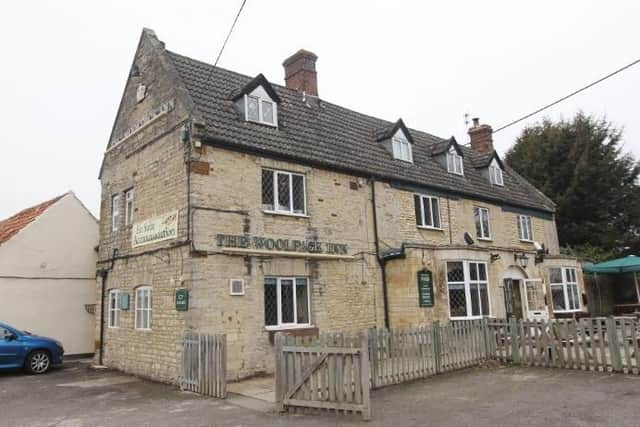DAVID SAINT COLUMN: Pub name reveals county's former trade


Many of Northamptonshire’s landed families made their fortunes through sheep-farming and wool-trading; the Brudenells, Spencers and Ishams among them.
So important was wool in England that the Speaker of the House of Lords ‘sits’ on the woolsack, reflecting the wealth the industry brought in the 15th century.
Advertisement
Hide AdAdvertisement
Hide AdThere was a wool industry in our county then, but the Northamptonshire Militia Lists of 1777 shows it was in the 18th century that it boomed.
Some 1,150 men aged 18 to 45 worked in the trade. As well as Northampton, Rothwell and Kettering, the main centres were villages such as Corby, Cottingham, Great Oxendon, Welford, Kilsby, Crick, Middleton Cheney, Braybrooke and Long Buckby.
In Braybrooke, for instance, 31 out of 64 eligible men were weavers, a high percentage.
In Long Buckby, 61 out of 183 were either weavers or woolcombers, one of them was ‘Jos. Sabin’. (I was at school with a Buckby lad named Sabin, interesting!)
Advertisement
Hide AdAdvertisement
Hide AdThe industry gave its name to many pubs called ‘The Woolpack’ in the county. In Islip (pictured) it still does a roaring trade! Others were in Cranford St John, Weldon, Rothwell, Long Buckby, Middleton and Bridge Street, in Northampton, and The Horsemarket, in Kettering.
The Militia Lists breaks down the trade into 289 woolcombers and 1,164 weavers and framework knitters county-wide.
The weavers included all workers in woollen fabric and are listed as “1 cloth joiner, 2 clothiers, 2 harrateen (worsted) makers, 5 manufacturers, 12 serge makers, 5 weavers of plush, 1 of sack, 6 of shag, 1 of silk, 2 of stocking”.
Before it could be spun, the wool had to be combed. This meant making the fibres lie parallel to each other.
Advertisement
Hide AdAdvertisement
Hide AdThey were sprinkled with oil and then drawn through the teeth of two combs that had been heated in charcoal stoves, known as ‘comb pots’. Long Buckby had the most woolcombers in the county.
Throughout Britain, woolcombers had adopted St Blaze as their patron, rather gruesomely chosen because before he was martyred, his tormentors scraped his flesh with iron combs.
Christian art shows him as a bishop holding a large comb.
Celebrations on St Blaze’s Day were held every three or four years across Northamptonshire.
The Northampton Mercury of 1777 gave accounts of two such festivals in West Haddon and Long Buckby, while Anne Elizabeth Baker’s ‘Glossary of Northamptonshire Words and Phrases’ gives a full account of one in Northampton in 1804.
Advertisement
Hide AdAdvertisement
Hide AdFor the parade in Long Buckby on February 3, 1779, the whole village turned out to watch woolcombers in fancy dress, with St Blaze as a bishop in front, followed by Britannia sitting on a woolpack, an orator and journeymen with woollen wigs and with pink and blue tassels on their shoulders.
After the parade, everyone repaired to two pubs in the village. Yes, you’ve guessed... ‘The Bishop Blaze’ and ‘The Woolpack’.
The industry throughout Northamptonshire gradually declined and by 1820 it had all but disappeared.